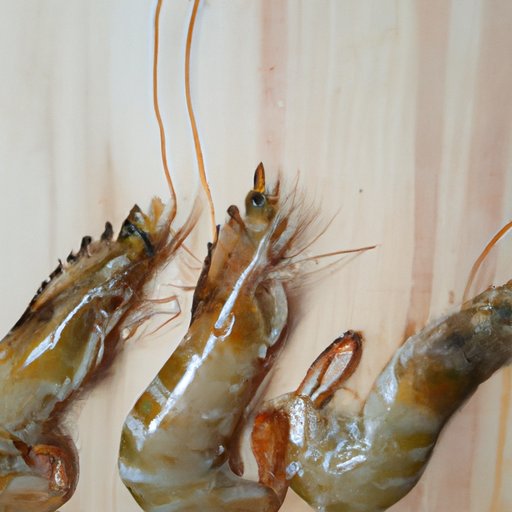Introduction
Shrimp is one of the most popular seafood options in the world. It’s an economical source of protein and essential nutrients, and can be cooked in a variety of ways. But is shrimp really healthy? This article will explore the nutritional benefits and health risks associated with eating shrimp, as well as tips on how to choose and cook shrimp to maximize its health benefits.
Nutritional Benefits of Eating Shrimp
Shrimp is a great source of lean protein, providing about 20 grams per 3-ounce serving. It’s also low in fat, containing just 1 gram of fat per serving. Shrimp is also rich in essential vitamins and minerals, including vitamin B12, selenium, phosphorus, zinc, and iron. These nutrients are important for maintaining a healthy immune system, muscle function, and overall health.
In addition, shrimp can be a good source of omega-3 fatty acids, which have been linked to numerous health benefits, including improved heart health and reduced inflammation. However, the amount of omega-3s in shrimp varies greatly depending on what the shrimp has been fed. Wild-caught shrimp generally contains more omega-3s than farmed shrimp.
The Health Risks of Eating Shrimp
Despite its many nutritional benefits, there are some potential health risks associated with eating shrimp. One of the main concerns is the potential presence of contaminants such as mercury, lead, and arsenic. These contaminants can accumulate in shrimp over time and may pose a risk to human health. Additionally, some farmed shrimp may contain antibiotics and other chemicals used in the farming process.
Another potential concern is allergies. Shrimp allergies are relatively common, and can cause symptoms such as hives, itching, and difficulty breathing. If you have any signs of an allergic reaction after eating shrimp, seek medical attention immediately.

How to Choose the Healthiest Shrimp
When choosing shrimp, it’s important to look for wild-caught shrimp whenever possible. Wild-caught shrimp tends to be higher in omega-3s and lower in contaminants than farmed shrimp. Make sure to check the label to make sure the shrimp is sustainably caught. You should also avoid shrimp that has been treated with preservatives or chemicals.

How to Cook Shrimp for Maximum Health Benefits
To get the most out of your shrimp, it’s best to avoid deep-frying. Instead, opt for healthier cooking methods such as baking, grilling, or steaming. This will help preserve the nutritional content of the shrimp and minimize the risk of contamination.

Delicious Recipes for Healthy Shrimp Dishes
Now that you know how to choose and cook shrimp for maximum health benefits, here are three delicious recipes for healthy shrimp dishes:
- Grilled Shrimp with Garlic and Herbs
- Baked Coconut Shrimp
- Lightly Steamed Shrimp with Lemon and Dill
Conclusion
Shrimp can be an excellent addition to a healthy diet. It’s a high-protein, low-fat food that is also a rich source of essential vitamins and minerals. While there are some potential health risks associated with eating shrimp, these can be minimized by choosing wild-caught shrimp and avoiding deep-frying. With a little bit of care and creativity, shrimp can be enjoyed as part of a nutritious and delicious meal.
(Note: Is this article not meeting your expectations? Do you have knowledge or insights to share? Unlock new opportunities and expand your reach by joining our authors team. Click Registration to join us and share your expertise with our readers.)
